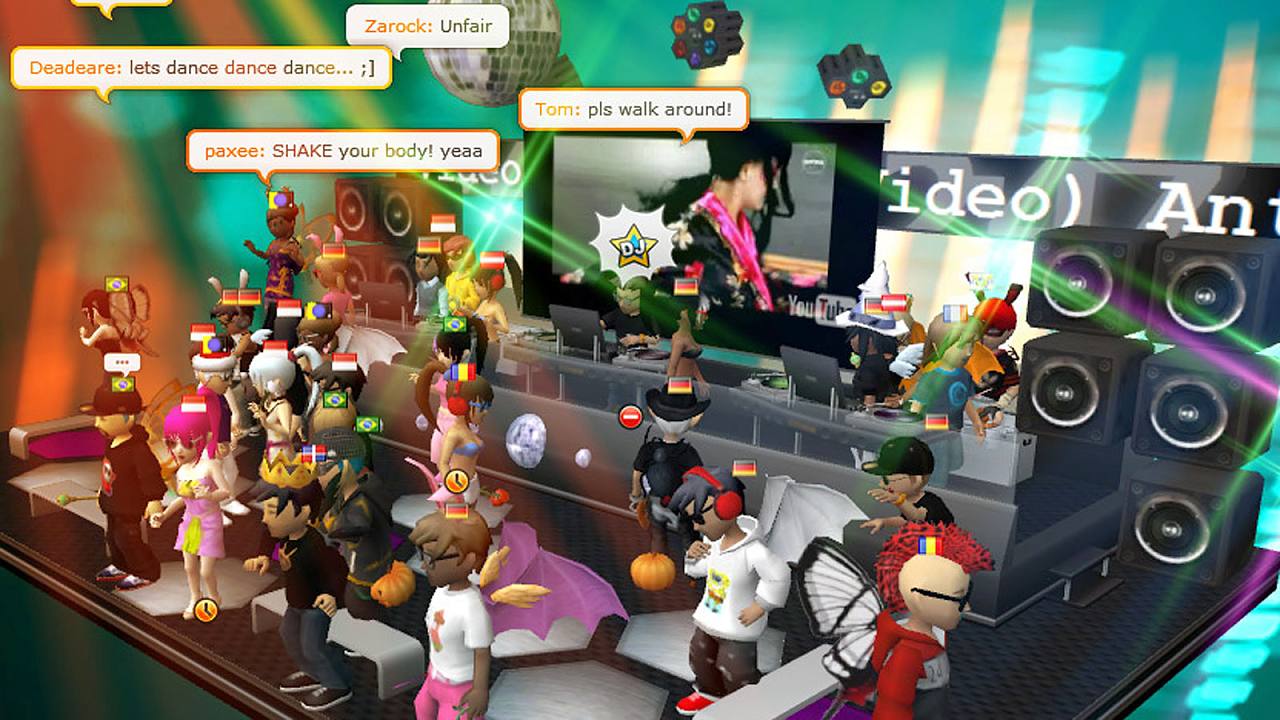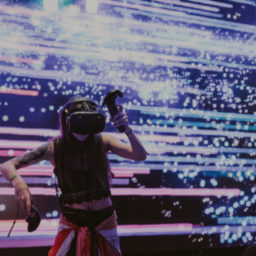Virtual concerts are not here to replace live music. They’re here to provide a new type of entertainment. Personally, I find the average virtual concert dull and inconvenient. It’s dull because it’s usually not more stimulating than a conversation with a friend, playing a video game, reading a book, watching a show on Netflix, or in some cases even scrolling through my Instagram. It’s inconvenient, because I’m supposed to tune in at a specific moment, whereas all other in-home entertainment in my life is basically on-demand.
So, what is better than all those things? What can make people decide to stay at home, rather than catch some fresh summer air before we head into inevitable winter lockdowns?
Virtual music events have to offer things that other types of entertainment can’t. A virtual event has to leverage the context of music, rather than just transmit a performance to an audience. If it is to be sustainable for musicians beyond the pandemic, because they prefer not to travel as much or want to stay more closely connected with fans on a regular basis, it will also have to be in some ways better than the real life equivalent.
A vast number of livestreams are basically just a poor version of an actual live event. The only edge it has is that you can be lazy and stay on your couch (and it’s easier to social distance with a front door between you and the world). So where does a virtual event have an edge? What can you do online that you can’t do in real life?
This post is inspired by Kevin Kelly’s Better Than Free published in 2008. He describes generatives as follows: “a generative value is a quality or attribute that must be generated, grown, cultivated, nurtured. […] In the digital arena, generative qualities add value to free copies, and therefore are something that can be sold.”
Putting it into the context of the post, generatives are qualities or attributes that make people choose virtual events over “real life”.
8 generatives better than real life
Magical powers
Let’s start big: we would all love to have magical powers. Whether it’s flying around a (virtual) venue or invisibly teleporting on to the stage to see what the artists are doing. Through virtual live events you can let people do things they literally can’t do in real life – not because it’s illegal, but because of the constraints of our oft-lamented physical reality.
Figure out what makes sense for you as an artist, band, or organiser and then give your audience superpowers. That could be multi-camera setups that let fans jump around the room and zoom in on what you’re doing, virtual environments in which people can move by flying around, or a telekenetic airhorn that you’ve set up to respond to people’s tips on Twitch.
Interactivity
Recognize people’s contexts and attention span. Asking people to sit on their couch and quietly watch a music performance does not fit most types of music well. Most concerts are interactive: people dance, sing, jump, clap, cheer, drink, take photos, meet people, and perhaps jump into a mosh pit.
The home context is different: there’s mobile phone notifications that compete for attention, there’s messaging apps, there’s that untidy corner of the room you will definitely get around to cleaning up some time this week…
Keep this in mind. You can give people an escape from interactions by making events interactive – even if that just means responding to what’s happening in the chat.
Context synergy
Imagine loving a virtual environment like a video game so much that you spend the majority of your free time in it or even just a few hours a week. Now imagine an artist you’re a fan of coming to this digital space that’s like a virtual home to you. Are you going to go outside and do something else? Hell no.
One could argue that the context of Minecraft or Fortnite is part of ‘real life’ anno 2020. In that case: are you going to play on your usual server and miss that concert? Hell no.
Artist proximity
Fans can feel much closer to an artist from the safety of their home and a keyboard than they might in real life. Some people go up to artists to thank them, some don’t because they don’t want to bother them, and some are just absolutely terrified of the interaction. If there is any interaction, it’s usually a quick thank you and signature after a concert and that’s it.
Online, you can leave room for fans to really interact: you can talk about topics, show them what you’re working on, answer questions, and acknowledge the individual by mentioning their name or nickname on the stream.
Fan community or scene networking
Music brings people together. Before the web, listening to music by an artist you were into was the only way for some people to know that there were other people who feel or think just like them (especially young people). Now you can just Google those feelings and thoughts and go down an internet rabbit hole of communities, so while music has lost that monopoly it’s still a powerful force as a connector.
Although people are still connected to various degrees of their social lives (flatmates, family, close friends, colleagues) they are likely disconnected from further degrees such as acquaintances, people they’d run into at concerts, and other people they’d only meet when at events and social gatherings. Furthermore, while performers would see the scene they’re part of in many cities, many fans wouldn’t be exposed to their own scene in other places.
If this is an important aspect to your music, bringing these scenes and communities together online can create social meaning that’s better than a Zoom call with mom (sorry, moms).
We’ve all seen recently what connected fan communities can do.
Global proximity
Similarly, it’s great to feel closer to the rest of the world while being unable to travel. Many dance music streams will have Zoom sessions running which fans can join in order to broadcast themselves. You’ll see ravers sitting in their living rooms or at their desks, waving flags, drinking, or eating chicken (as seen on-stream during Dominator‘s virtual event). Occasionally, some of these webcams will be shown alongside the performers in the main stream, showing a global fan community from Canada to Brazil to Thailand to Italy (in the case of Dominator, that chicken-eating guy’s backdrop was a Mad Max-like stage with cars and motorbikes making jumps behind the DJ – unfortunately the “in-stream” is not visible on the recordings uploaded to YouTube).
If people have friends far away, they can experience that proximity together by tuning into the same stream. While there are ways to do watch Netflix together in a synced session, it’s not as special as coming together in an event that thousands of others are also using to come together.

A role to play for the viewer
This was already captured above, but I think the principle is so important that it’s worth making it explicit. Instead of broadcasting a stream and implying fans should just sit down and shut up, you can involve them.
Think instreaming by showing fans’ cams to the wider fan community, by improvising based on fan input, or by letting them interact with each other through magical powers. To put it in Ishkur’s words:

The premise may be awkward as a performer, but make the event about more than yourself. Let the people who attend participate. Make them part of ‘you’.
Personal example from back in March: with Hard Dance Berlin I created a line-up of performers and then used Plug.dj to let the crowd have a chance to go back to back with the DJs, so DJs would play half of their set time and the crowd was responsible for the other half of the tracks played during that time. The event was called DJs vs Berlin. Afterwards, we opened up the decks to the audience queue.
Another example is audience avatar customization as can be done in Fortnite, Minecraft, IMVU, Club Cooee (pictured at the top) and other virtual event spaces.
FOMO: Fear Of Missing Out
I never listened to Slayer much, but when they announced their last tour I got tickets to their show and started listening to their discography a lot. And the show itself? It was awesome. However, similar decisions motivated by FOMO-related impulses haven’t always panned out as well. Sometimes something was a waste of money or a night better spent asleep. Oh well.
My point: FOMO is powerful. It can make people prioritize things that normally wouldn’t be high on their list. Whether it’s a one-time only virtual event like the screening of Nick Cave’s Idiot Prayer, the release of limited edition merch during a stream, rotating line-ups like the Verzuz battles, or just having unique sets in your events as a result of improvisation and interaction: all of these create FOMO and make people want to tune in instead of going out.
Bonus: if your event doesn’t go as well as you hoped, but is not terrible either, cognitive dissonance will make sure that people’s anticipation translates into satisfaction. (But remember: trust and attention are fickle: do what you can to avoid disappointing people)
A nod to Kevin Kelly’s Better Than Free post, which inspired my own. The post has seen hundreds of comments since publication: if you think I missed something, please leave a comment below.
Continue reading
